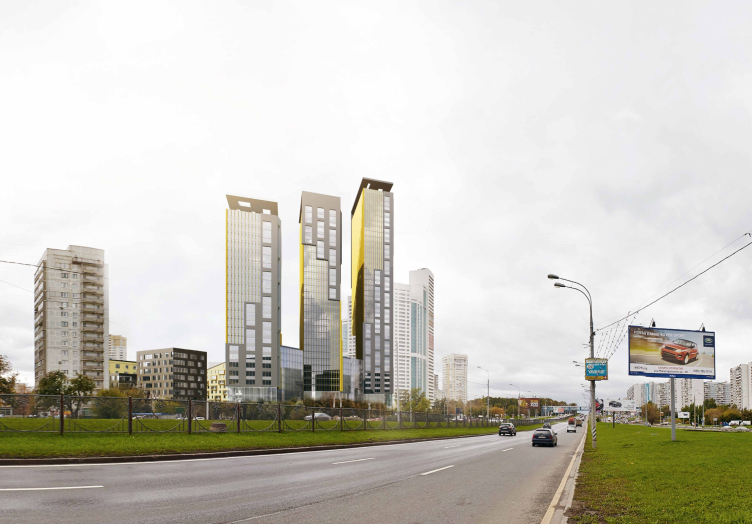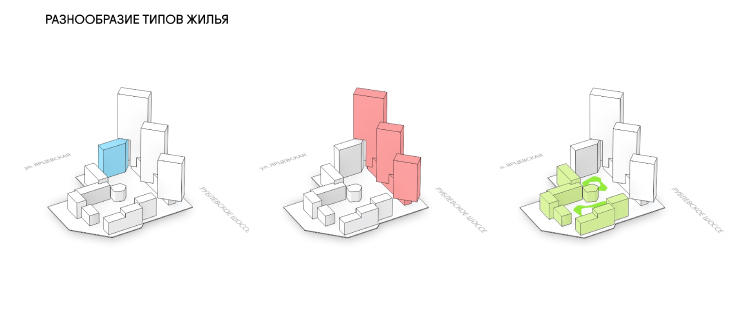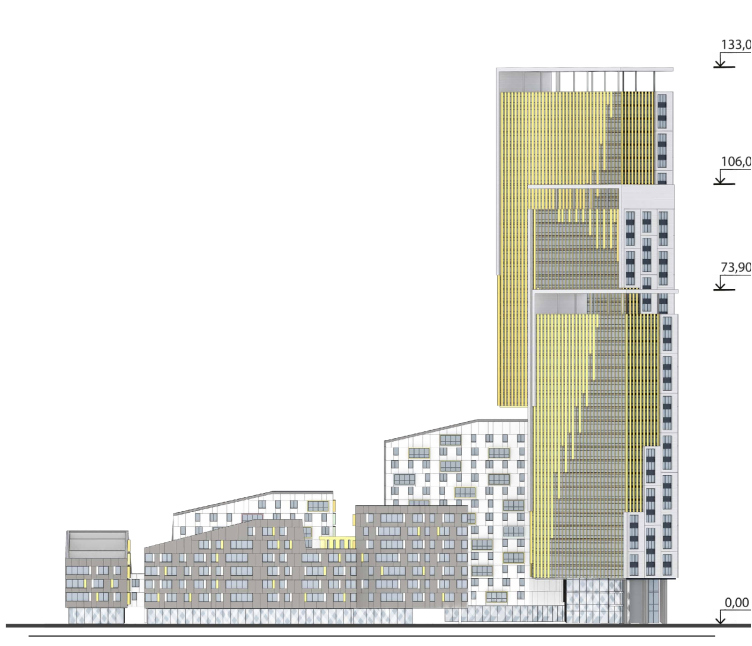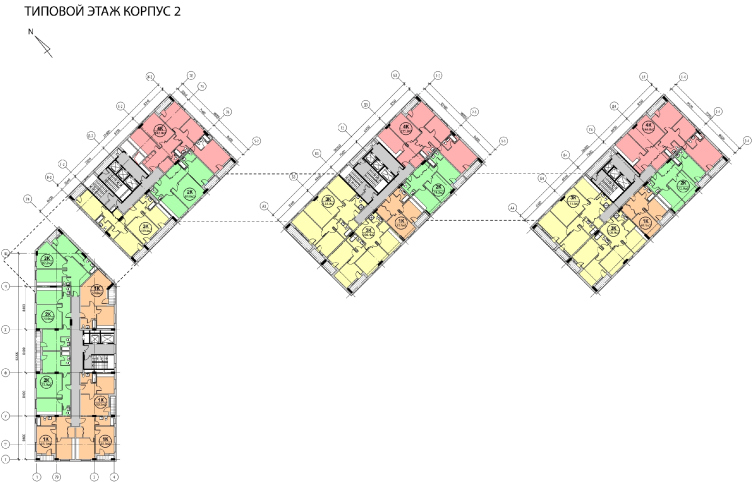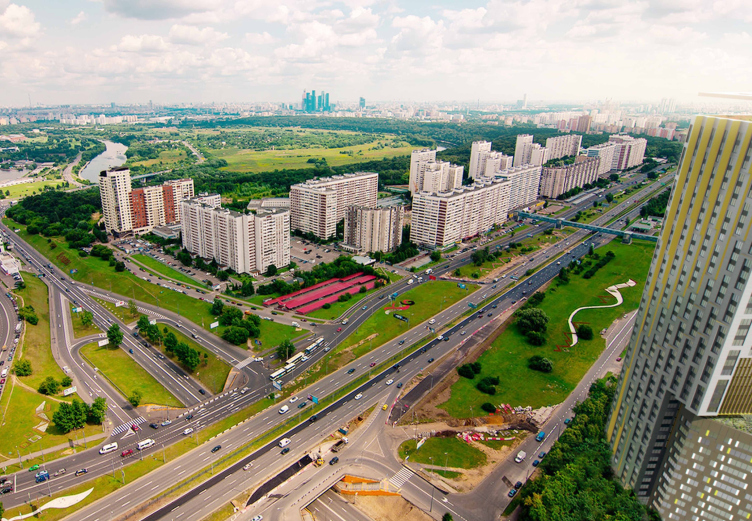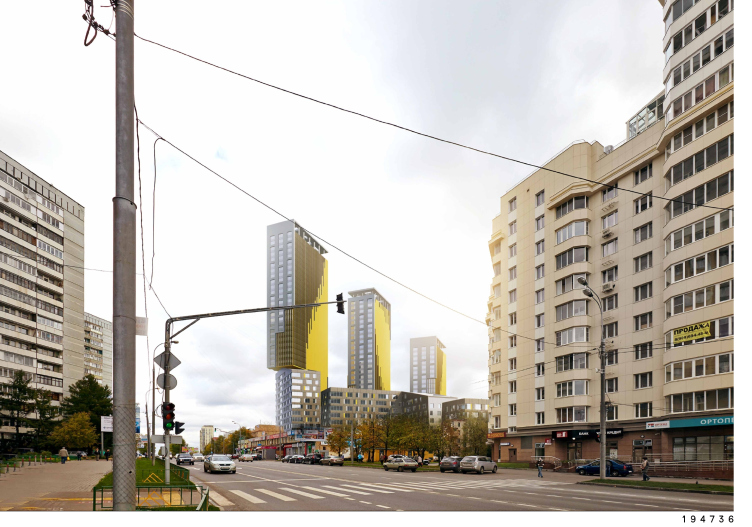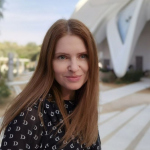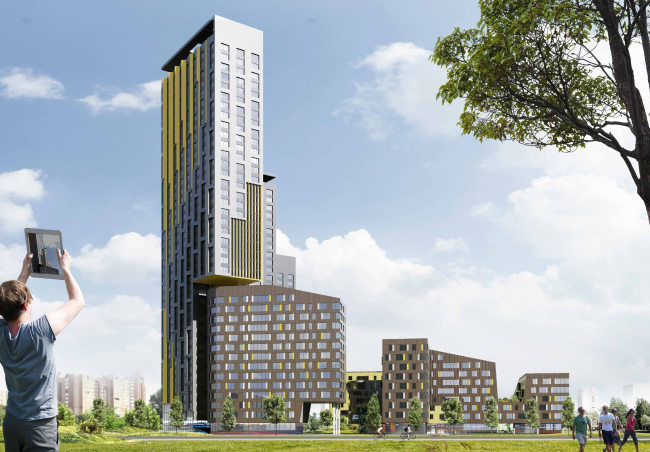
Concept of the residential complex at the Rublevskoe Highway © "Atrium" Bureau. Authors: Anton Nadtochy, Vera Butko, Dmitry Zrazhevsky, Anna Fesenko, Olga Romanova, Natalia Sablina, Peter Alimov, Dmitry Khudenkikh
Archi.ru has already exposed its readers to the results of the contest for the residential complex at the Rublevskoe Highway organized by "PIK" Group. The project developed by the architects of "Atrium" bureauwas voted by the judging panel to take the third place, standing next only to "Reserve" Studio and Sergey Skuratov Architects.
The 2.6-hectare land site is situated at the crossing of the Yartsevskaya Street and the Rublevskoe Highway, a five-minute walk away from the “Molodezhnaya” metro station. This is a part of the nation capital's greenest area, and, from the ecological standpoint, arguably one of the best in the city. From the urban planning standpoint, however, one can hardly call this site a convenient one: the housing of the Rublevskoe Highway is rather monotonous and is rarely proportional to the humble pedestrian. This is specifically why one of the main tasks set before the contestants was the "relieving the town-planning tension" in this part of the city, at the expense of placing, at the crest of the Krylatsky Hill, a picturesque architectural centerpiece.

Concept of the residential complex at the Rublevskoe Highway © "Atrium" Bureau.
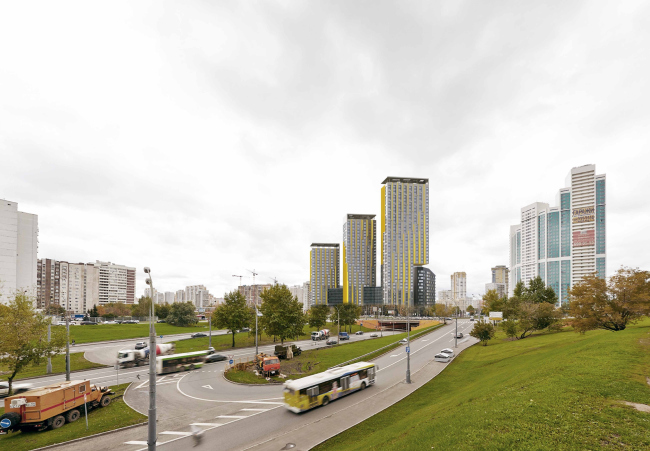
Concept of the residential complex at the Rublevskoe Highway © "Atrium" Bureau.
In accordance with the specifications, Vera Butko and Anton Nadtochy split the complex into two major parts. What mattered most in this division was the difference of the scales: the grand and imposing buildings facing the highway and the "humanized" ones for the inside territories. The high-rise part consists of three towers that line up along the Rublevskoe Highway and support its housing front. As one approaches the crossroads, they increase their height to form an imposing step-like silhouette. The tallest, 40-floor, tower "holds" the corner in a powerful exclamation mark. The architects partially borrowed the idea of this composition from the residential complex "Rublevskie Ogni" located on the other side of the Yartsevskaya Street - only in the latter case the towers are "glued" to one another, while "Atrium" carefully articulates the volume of each high-rise and positions them at a shifted angle to their common base, which renders the silhouette of the "propylaeum" still more dramatic. Besides, as the authors themselves explain, the resulting "wall" of towers adequately protects the yard of the complex from the constant noise of the highway, while their "twist" provides for the diversity of their perception while moving in and out of the city.
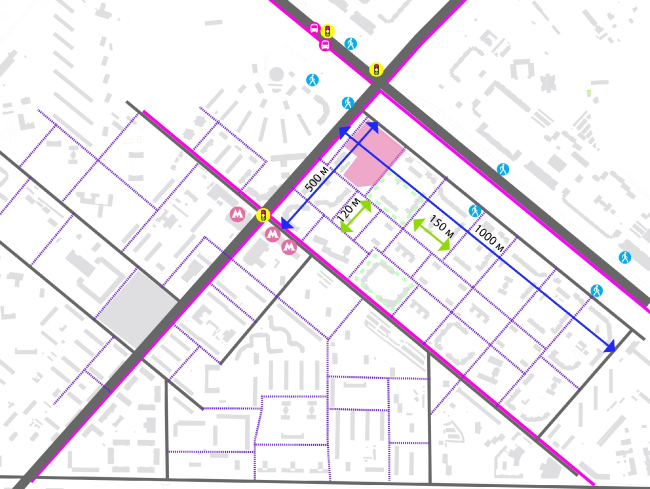
Block layout of the residential complex at the Rublevskoe Highway © "Atrium"
Due to the fact that the two towers are positioned at an angle to the highway, two of them, when viewed from the inside yard, form dramatic cantilevers, while the corner one is "leaning" on the residential building that is still in construction along the Yartsevskaya Street, thus forming an imposing multi-height arch that not only functions as the main entrance portal but also lets in more light into the yard space.
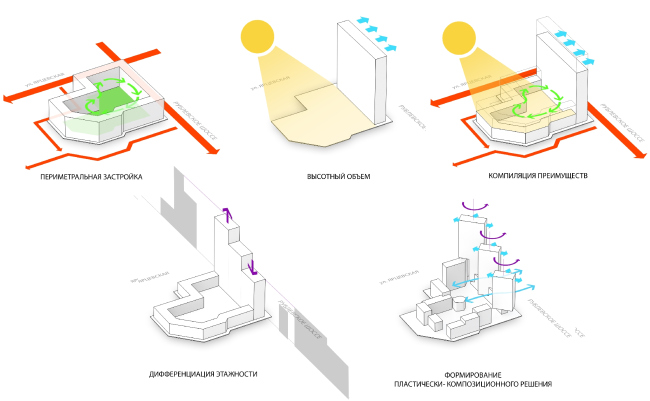
Concept of the residential complex at the Rublevskoe Highway © "Atrium" Bureau.
The dynamics of the twist of the towers is enhanced by the facade finish that is pieced together from slabs that are placed at various angles, thanks to which the surface looks but a bit rippled, while, with the change of the viewing angle, the pattern grows more dynamic. This effect is enhanced manifold with the combination of the shades of color: the silver and the snow-white finishes alternate with the golden hue.

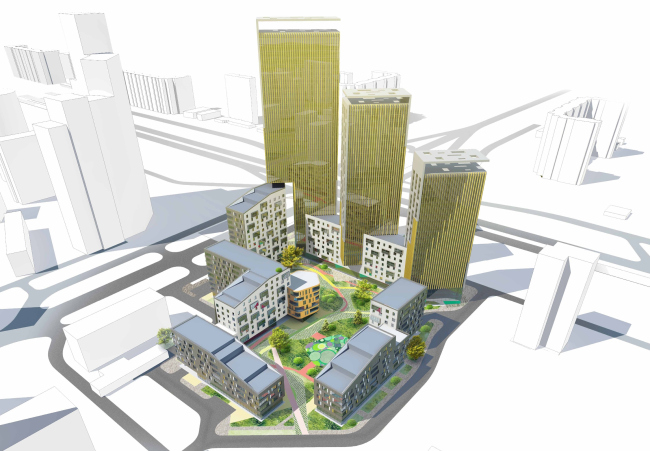
Concept of the residential complex at the Rublevskoe Highway © "Atrium" Bureau.

Concept of the residential complex at the Rublevskoe Highway © "Atrium" Bureau.
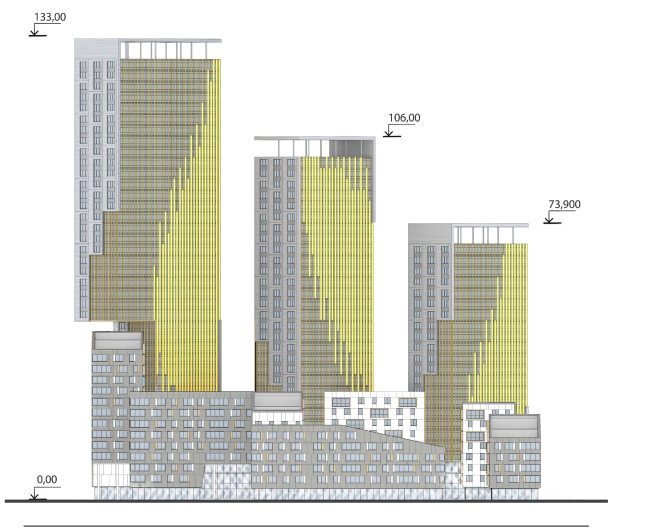
Concept of the residential complex at the Rublevskoe Highway. Southwest facade. © "Atrium" Bureau.
Placing the high-rise volumes along the highway, the architects used the remaining site for the "block" housing of a smaller (and thus more human) magnitude: from four to nine floors. This gave the architects an opportunity to unobtrusively "inscribe" the second half of the residential complex into the tissue of the surrounding neighborhood without violating its continuity with the pinpoints of the towers - a model example of achieving the desirable density in a humane way. Also, to better integrate the new residential complex into its surroundings, the architects placed the surface of its courtyard on a level with the existing terrain; the car par was sunk completely underground, which help meet the construction blueprint regulations.
The authors not only took care about the unobtrusive integration of the complex into its surroundings, though, but also about the future of the entire neighborhood. Still at the stage of working with the preliminary sketches it became clear that the density of the streets here (just like in any other part of Moscow, for that matter) is clearly inadequate - and the architects proposed to add two new roads, routing them around the land site: one driveway runs between the existing houses parallel to the Rublevskoe Highway, the other duplicates the Yartsevskaya Street. According to the authors, these new roads could become the new transport framework for the subsequent saturation of the surrounding sites - in other words, for filling the voids with low-rise buildings, which would also help to "humanize" the environment.
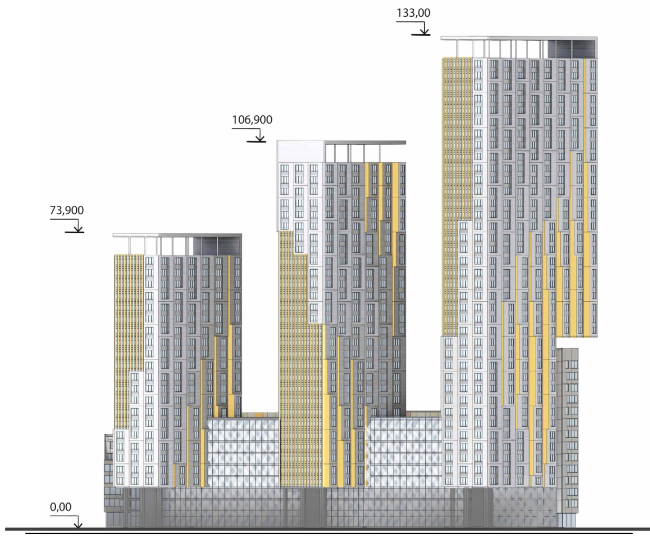
Concept of the residential complex at the Rublevskoe Highway. Northwest facade. © "Atrium" Bureau.
The residential houses stand along the perimeter of the land site forming a spacious yet cozy yard with sports and playgrounds, flowerbeds, and a green lawn, while the decrease of the number of floors towards the south border of the complex provides for the maximum insolation. The architects dress up these buildings in simpler "clothes" but give them a characteristic "faceted" shape. The dancing rhythm of the windows enhanced by the color, the cantilever protrusions, and the glazed ground floors - all of this quite corresponds to what we are used to seeing in "Atrium" works. And, in the center of the yard, the bright-yellow house fills the space with plastics and emotion, at the same time creating a transition to the human scale and forming the inside zoning of the yard.
The hierarchy of the apartments in the designed complex is built in accordance with the overall compositional solution, providing for the needs of all the categories of potential buyers. For example, in the three high-rises, the architects proposed to place the high-profile apartments commanding the magnificent city views. The building that "props up" the 40-floor tower is meant for the economy-class apartment meant for renting out, the kind that Moscow is in such desperate need of. The low-rise houses with the windows overlooking the courtyard will be perfect for the families with kids, while the apartments of the corridor type at the base of the towers will be perfect for the young people to love in. The lower floors of the complex will serve the public functions which will help solve the problem of the absence of such objects within a walking distance, at the same time boosting the pedestrian activity along the Rublevskoe Highway where the public functions occupy even two first floors.

Concept of the residential complex at the Rublevskoe Highway. Southeast facade. © "Atrium" Bureau.
The idea of creating, in a separately taken neighborhood, a human-proportionate environment, protected from the noise and the grime of the Rublevskoe Highway with a wall of three towers, was noted by the judging panel as a doubtless success of "Atrium". It is in this idea that Vera Butko and Anton Nadtochy saw the solution to the complicated town-planning situation of this place that, in their opinion, deserved to be drastically improved.
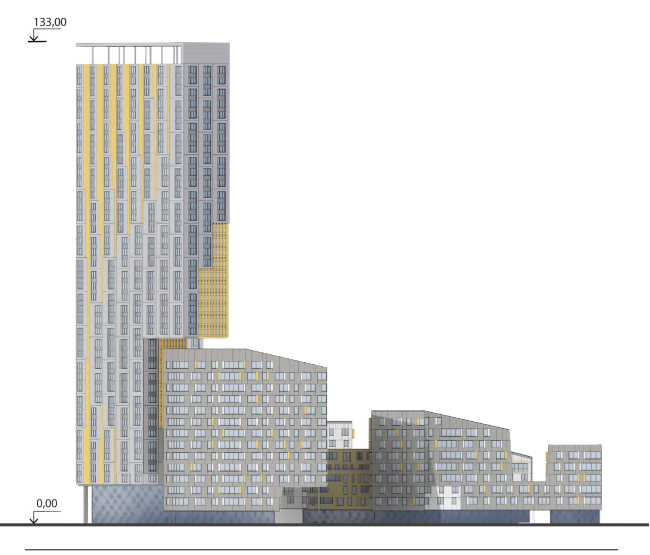
Concept of the residential complex at the Rublevskoe Highway. Northwest facade. © "Atrium" Bureau.
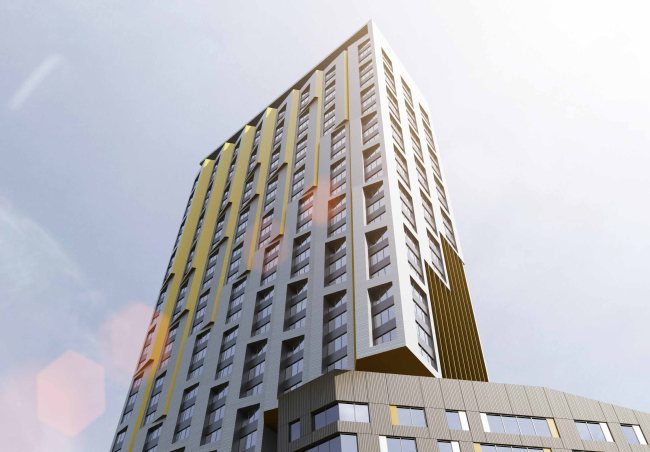
Concept of the residential complex at the Rublevskoe Highway © "Atrium" Bureau.
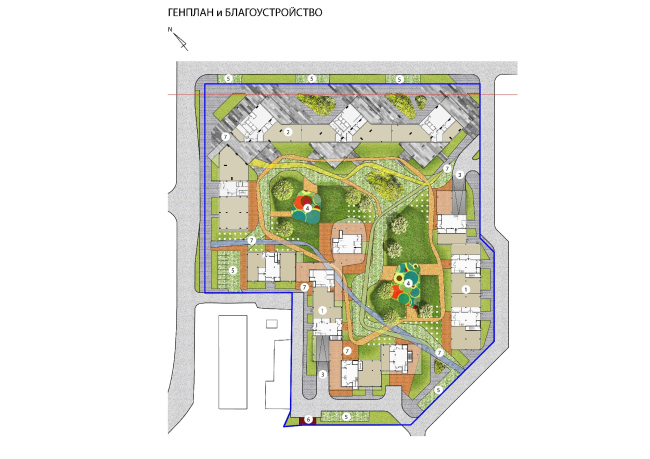
Concept of the residential complex at the Rublevskoe Highway. Master plan and landscaping © "Atrium" Bureau.
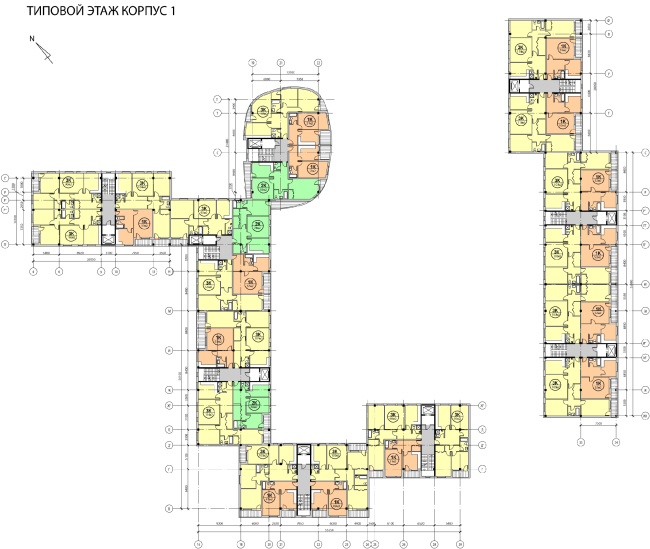
Concept of the residential complex at the Rublevskoe Highway. Typical floor. © "Atrium" Bureau.
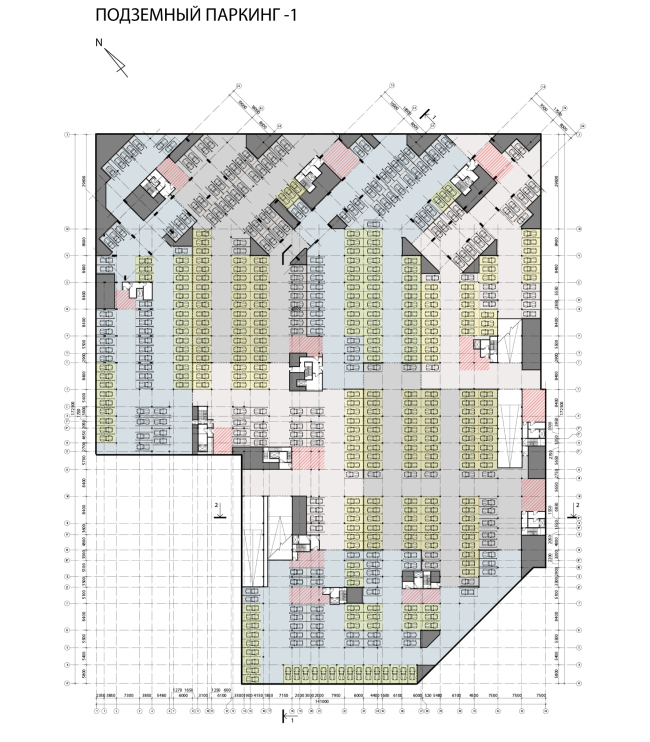
Concept of the residential complex at the Rublevskoe Highway. Underground parking garage. © "Atrium" Bureau.

Concept of the residential complex at the Rublevskoe Highway. © "Atrium" Bureau.

Concept of the residential complex at the Rublevskoe Highway. © "Atrium" Bureau.
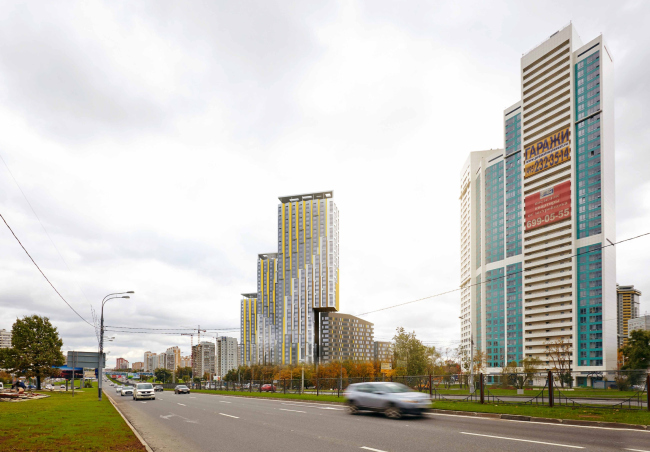
Concept of the residential complex at the Rublevskoe Highway. © "Atrium" Bureau.
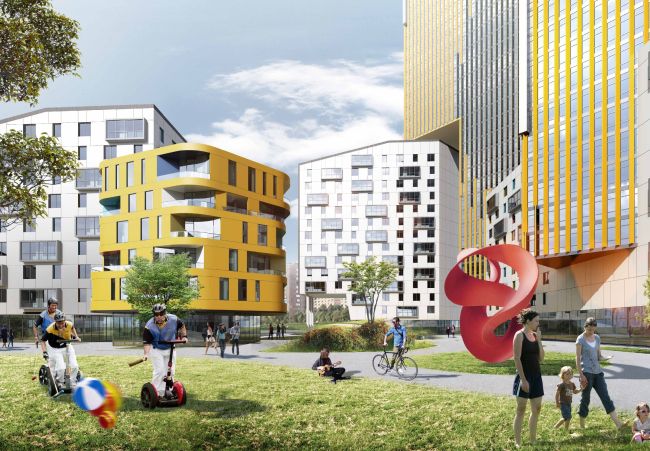
Concept of the residential complex at the Rublevskoe Highway. © "Atrium" Bureau.
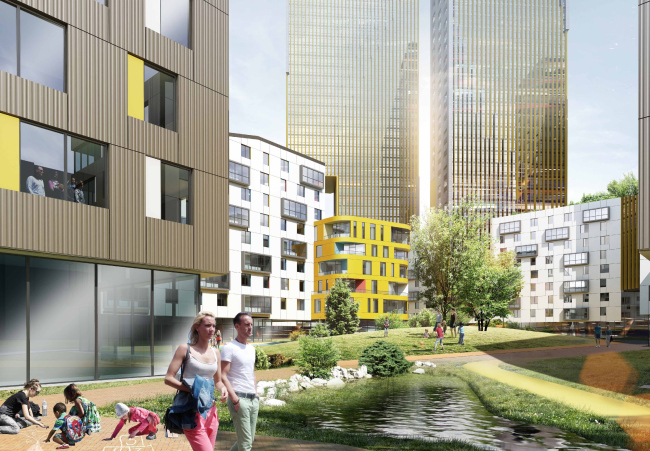
Concept of the residential complex at the Rublevskoe Highway. © "Atrium" Bureau.

Concept of the residential complex at the Rublevskoe Highway. © "Atrium" Bureau.






